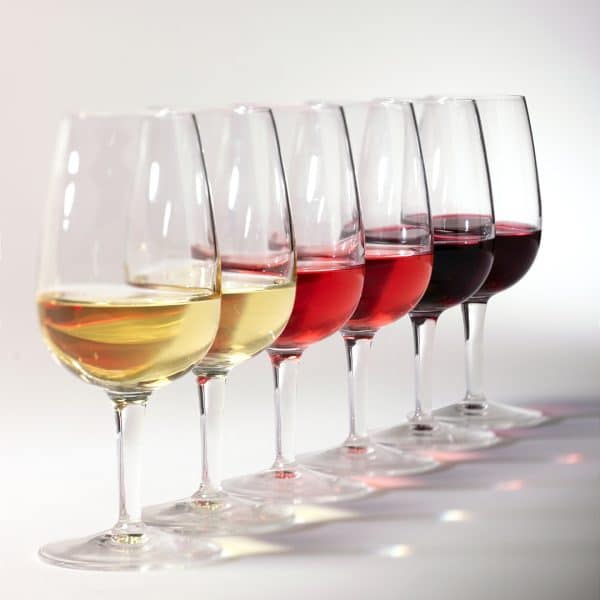To drink or not to drink…that’s one question. Another is what’s better to drink, when it comes to wine? And yet another question is what are my better anti-inflammatory wine choices that’ll help me achieve my personal health goals?
Picture this: a cozy evening, your favorite book or show, and a glass of wine that not only complements your meal but also contributes to your overall well-being.
As women embracing the power of an anti-inflammatory lifestyle, we understand the importance of every choice we make. And yes, that includes what we pour into our glasses.
But why the fuss about the type of wine, you might wonder? That’s a fantastic question, and I’m here to give you the real scoop. Just like you meticulously choose ingredients for your meals, your choice of wine can play a significant role in your health journey.
From opting for organically grown grapes to steering clear of sulfites, there’s a whole world of wine wisdom waiting to be explored. So, let’s raise our glasses and explore the art of selecting wines that align perfectly with your wellness aspirations.
Cheers to sipping smarter and savoring every moment along the way!

Mastering The Selection: Anti-Inflammatory Wine Choices That Play Nice With Your Head
Sometimes a glass of wine can trigger a nasty old headache, so let’s look at what we can do to prevent a wine headache.
You may think the sulfites in your glass of wine is the culprit for those pesky post-drink headaches, but the cause may be histamines or dehydration.
For many reasons, including dehydration headaches, getting in enough potassium and water are important. Check out my article on “Will Better Quality Water Help You Stay Hydrated?” for more on staying hydrated.
For potassium, opt for potassium-rich foods such as bananas, sweet potatoes, spinach, avocados, and beans. These foods not only bring a burst of flavor to your plate but also provide a natural source of this essential mineral.
Additionally, don’t forget to include yogurt, fish, and citrus fruits like oranges, as they contribute to your potassium intake while offering a diverse range of other nutrients.
Some more tips that can help here are to enjoy organic wines, choose less sweet white wines, and to enjoy refreshing water and coconut water before or after your glass of wine.
Consider snacks lower in sodium, but higher in water and potassium like guacamole and cucumber slices – a delicious better hydration pair.

Balancing Better Blood Sugar Levels And Anti-Inflammatory Wine Choices
Nutrient balance and, more specifically, making sure you are only getting in one serving of carbohydrate per nutrition pit stop will help you balance your blood sugar levels.
Opt for wines with lower residual sugar content, as excessive sugar in wine can potentially affect blood sugar levels. Dry red or white wines tend to have less sugar compared to sweet or dessert wines.
Pair your wine with a balanced meal that includes lean proteins, healthy fats, and fiber-rich vegetables. This combination can help mitigate the impact of alcohol on blood sugar levels by slowing down the absorption of sugars into the bloodstream.
Since wine delivers sugar, consider turning your glass into a spritzer. Just mix ⅓ parts wine with ⅔ parts sparkling or soda water. Festive, fun to drink and will help you avoid feeling deprived. Make sure to pair your spritzer with nuts, seeds and olives as opposed to crackers, fruit, or starchy vegetables (potato, beets etc).

Dealing With Digestive Woes
If your doctor or dietitian rules wine out for you, I can’t overrule them. You might want to ask them about vodka with a splash of cranberry instead.
However, if you are given the yellow or green light on drinking wine, there are some steps you can take to reduce the potential for triggering digestive issues.
Try enjoying your glass of wine at the start of a meal as opposed to after, limit other acid formers at the same meal (sugar, meat, tomatoes, coffee etc), and consider wines known to be less acidic.
Reds from warmer climates (like California, Chile, and Australia), and varietals such as Cabernet Sauvignon, Syrah/Shiraz, Merlot, Zinfandel, Grenache and Malbec, may be more agreeable.
Eat alkaline-forming leafy greens at your meal and stick to moderate servings of wine. Remember: whether or not we are drinking wine, the body finds it easier to run better when it has less work to do (so choose to eat better amounts at one time).

What If I’m Allergic To Wine
If you’re allergic to sulfites, try looking for an organic and biodynamic option. These should not be produced with added sulfites as preservatives or stabilizers. If your allergy is to histamine, try choosing a less sweet white over red wines.
Exploring wines made from fruits other than grapes, such as blueberry, cherry, or apple wines, might offer a delicious and allergen-free solution.
These fruit-based wines can provide a delightful sensory experience while sidestepping the compounds in grape wines that trigger your allergies.
As with any dietary restrictions, it’s a good idea to read labels carefully, inquire about ingredients, and perhaps even consult with a healthcare professional before indulging in new wine choices.
Remember, the world of wines is vast, and there’s a wine out there to suit every palate and accommodate various sensitivities.

What About Heart Health
When it comes to promoting heart health through your wine choices, some varieties stand out for their potential benefits. The good news is you can look to wine, especially dark red wines to get heart healthy antioxidants.
Red wines, such as Cabernet Sauvignon, Pinot Noir, and Merlot, have garnered attention for their higher levels of heart-healthy compounds like resveratrol, which is believed to have antioxidant and anti-inflammatory properties.
Cannonau is a type of wine made from sunstressed Grenache (red) grapes. The grapes are darker and their skins have more polyphenols and resveratrol which are powerful antioxidants that can help prevent coronary artery disease.
These red wines may contribute to improved cardiovascular function and overall heart well-being. Furthermore, opting for wines with lower alcohol content can be beneficial, as excessive alcohol consumption can negate the potential advantages for your heart.
Remember, moderation is key; enjoying a glass of red wine occasionally as part of a balanced lifestyle, along with a heart-healthy diet and regular exercise, can be a delicious way to support your cardiovascular health.

I Want A Smaller Waistline AND Some Wine
Savoring wine while managing your weight is all about mindful enjoyment and balance.
Two reasons to proceed with caution: alcohol digestion doesn’t optimize your metabolism and use of nutrients, just the opposite actually, and then there’s the sugar factor (already discussed above).
So how can you have your desired waistline, wine and sip it too? Sip a better amount! A serving of wine is about nine sips – not gulps – so enjoy those nine sips from one or several glasses but keep it to just nine.
Or opt for smaller wine glasses to naturally moderate your intake. Slow, deliberate sips not only enhance the tasting experience but also allow you to savor the moment without overindulging.
Choosing lighter wine options, like dry white wines or sparkling wines, can be a smart move as they generally have fewer calories and lower alcohol content. Additionally, be conscious of what you pair with your wine.
Opt for nutrient-rich snacks like a handful of nuts or a plate of fresh fruit and cheese, which can complement your wine while adding satiety.
Wine is a treat, not a food group, so treat yourself to it as you would any other treat – less often. If you enjoy a glass skip dessert. Also, fun fact, vinho verde, “green wine” in Portuguese, is made from grapes that have not yet fully ripened, so this wine has less sugar and fewer calories.
Remember, enjoying wine and managing your weight can coexist harmoniously with a little attention to portion control and balanced choices.
Conclusion
And there you have it, a flavorful journey through the realm of anti-inflammatory wine choices! We’ve sipped our way through an array of insights, uncovering the secrets to enjoying wine without those pesky headaches, finding the sweet spot for blood sugar balance, and even addressing those lingering digestive questions.
For those with wine allergies, fear not – we’ve unveiled alternatives that let you raise your glass with joy. And let’s not forget out little chat about keeping the scales happy while savoring your favorite wine.
Remember this: every sip is a chance to celebrate not just the wonderful flavors in your glass, but the fantastic health-conscious choices you’re making.
Keep the spirit of moderation and mindfulness alive in every clink and every sip. Here’s to you, to vibrant health, and to the joy of savoring life’s pleasures – one delicious sip at a time. Cheers!
Ready to turn up the flavor and kick inflammation to the curb? 🌱🥑 Say hello to your new secret weapon: “The Power of Plants to Fight Inflammation” eBook! 📚🌿 I
It’s your ultimate guide to embracing the amazing world of plant-based goodness and unleashing it against inflammation. We’re talking tasty recipes, expert tips, and all the juicy details on how to make those pesky inflammation vibes run for the hills.
Don’t miss out on this epic plant-powered adventure – your taste buds and your body will be high-fiving you all the way! Download your copy today!
***Disclaimer: This post is for informational purposes only and should not be construed as medical advice***


